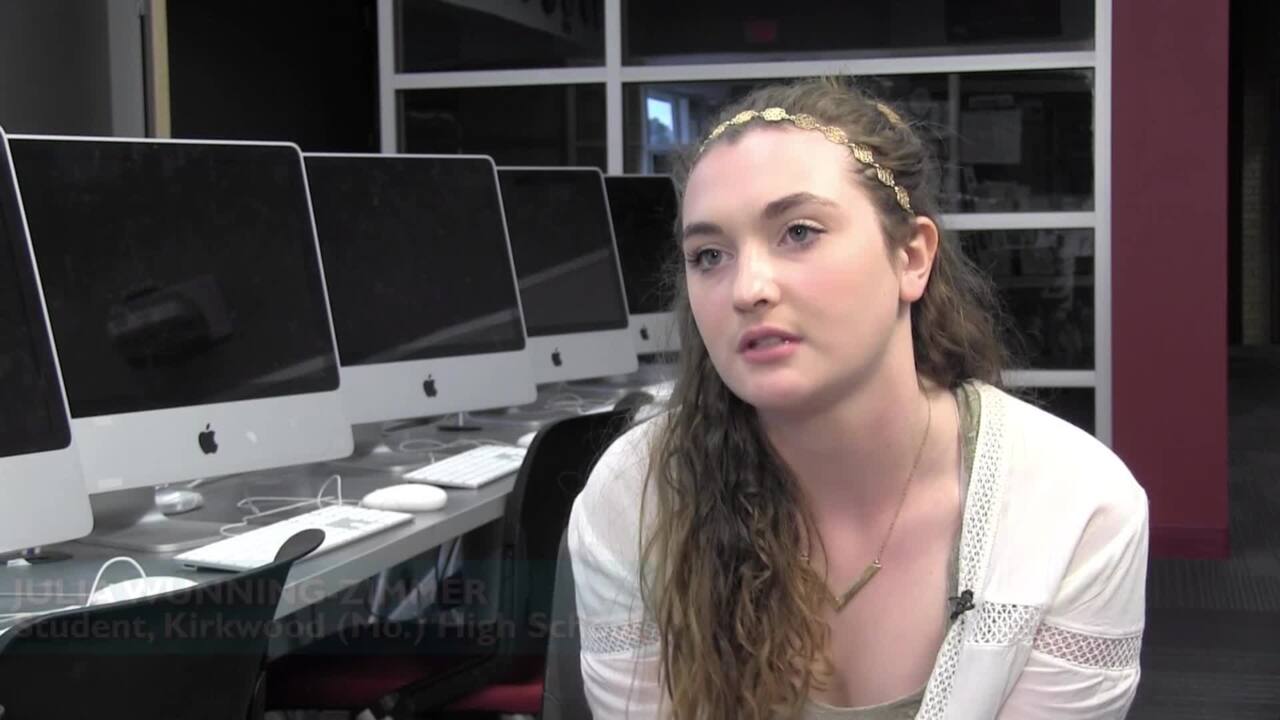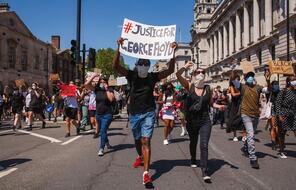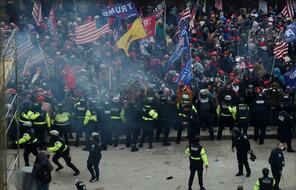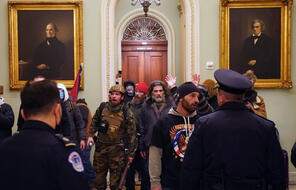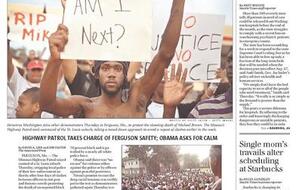DAVID CARSON: There's an image that I shot of a police officer firing a tear gas canister. It was shot during one of my ride-alongs with the tactical team and that image I find fascinating because people view that image through their own personal biases. And the caption of the image says, St. Louis county police tactical team member fires a tear gas canister in Ferguson.
Its a very dramatic picture, its got a, theres a helicopter light streaking down through the center of the picture. The man is firing a tear gas launcher and its got a big flame coming out of it, and theres the red lights of the sirens and the blue lights of the sirens kind of mixed in there, and theres tear gas in the background.
My boss initial reaction to that photo was, "Oh my God, this looks like a video game image," and I was like, "That's the reality out here right now and we need to run that." We ran that picture on our front page.
DAVID CARSON: The thing about that picture, and it's fascinating, is that the police officers loved that picture. They loved that picture, they thought it showed them doing their job and made them look very strong and powerful and stuff. And the protestors loved this picture. They thought that this picture showed police militarization and police violence. Look at these outrageous tactics that the police are deploying on us.
I find that picture to be fascinating as to how people view that picture, whether that picture is viewed through the eyes of the police and police sympathizers or whether its viewed through protestors and protestor sympathizers depends on how you view that photograph.
So that to me is a successful photograph because Ive just showed what was going on and people are, from both sides, are reading into it and Im still...I have stated pretty clearly in the caption what was going on. I liked that photo for that reason because people do sort of take their own takes on it.
JULIA WUNNING-ZIMMER: I think the media really had, especially the national sources, were very geared towards taking the photos of the tear gas and taking photos of the flames and the QuikTrip going up in flames. That did happen, obviously, but I think they really wanted to focus on the more hard images rather than the peaceful things that were also going on.
I think, not really that they had a bias, I mean kind of. They were just looking for the attention and not really the-- I mean its not as big of a story to see-- not friendly, but nonviolent interaction in Ferguson and I think that was something that wasnt really covered a lot.
CRAIG CHEATHAM: I think that television, and in particular what I try to do in the stories that I did where we try to provide context, focused on deeper meanings to things that we saw through people.
You can still get emotional, you can still have conflict, you can still see action if somebody is doing something to get their point across. They dont have to be yelling at somebody. I dont have to see a burning building to create good TV. But I will tell you that when the city was on fire, it was remarkable to watch it.
I'd never seen anything like it in any community Ive lived in. There were people who were concerned about the fact that our coverage, not just our coverage but television I think in general, made Ferguson, at times, look like a war zone. Im not talking about the half dozen blocks or so that were pretty chaotic at times. Im talking about the entire city of Ferguson, I think people believed, was blowing up and it clearly wasnt. And I think that we got those criticisms quite a bit.
WESLEY LOWERY: One of the things I think is vitally important, especially when youre doing this in real time, is acknowledging where you are and what you dont know. Acknowledging the fact that very often in a fast-moving, chaotic, hectic situation, you have a very specific vantage point of a very specific action.
If Im standing in front of a certain storefront and everything is peaceful, that does not mean that two blocks away theres not a store being looted. That was whats very difficult, is that so often we expect of our reporters on the ground this 30,000-foot analysis of what is happening in Ferguson right now. Is it violent or is it peaceful? In reality, everything is more complicated than that.
